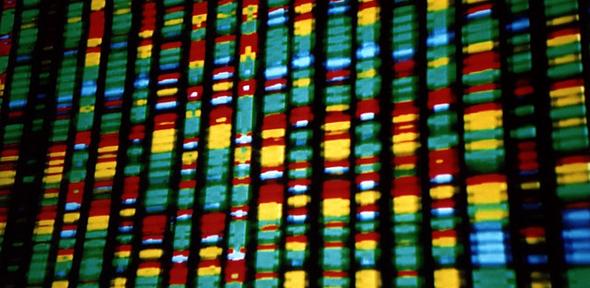Researchers from the University of Cambridge and the Babraham Institute have found that a naturally occurring modified DNA base appears to be stably incorporated in the DNA of many mammalian tissues, possibly representing an expansion of the functional DNA alphabet. The new study, published today (22 June) in the journal Nature Chemical Biology, has found that this rare ‘extra’ base, known as 5-formylcytosine (5fC) is stable in living mouse tissues.
While its exact function is yet to be determined, 5fC’s physical position in the genome makes it likely that it plays a key role in gene activity. “This modification to DNA is found in very specific positions in the genome – the places which regulate genes,” said the paper’s lead author Dr Martin Bachman, who conducted the research while at Cambridge’s Department of Chemistry. “In addition, it’s been found in every tissue in the body – albeit in very low levels.” “If 5fC is present in the DNA of all tissues, it is probably there for a reason,” said Professor Shankar Balasubramanian of the Department of Chemistry and the Cancer Research UK Cambridge Institute, who led the research. “It had been thought this modification was solely a short-lived intermediate, but the fact that we’ve demonstrated it can be stable in living tissue shows that it could regulate gene expression and potentially signal other events in cells.” Since the structure of DNA was discovered more than 60 years ago, it’s been known that there are four DNA bases: G, C, A and T (Guanine, Cytosine, Adenine and Thymine).
The way these bases are ordered determines the makeup of the genome. In addition to G, C, A and T, there are also small chemical modifications, or epigenetic marks, which affect how the DNA sequence is interpreted and control how certain genes are switched on or off. The study of these marks and how they affect gene activity is known as epigenetics. 5fC is one of these marks, and is formed when enzymes called TET enzymes add oxygen to methylated DNA – a DNA molecule with smaller molecules of methyl attached to the cytosine base. First discovered in 2011, it had been thought that 5fC was a ‘transitional’ state of the cytosine base which was then being removed from DNA by dedicated repair enzymes. However, this new research has found that 5fC can actually be stable in living tissue, making it likely that it plays a key role in the genome…




